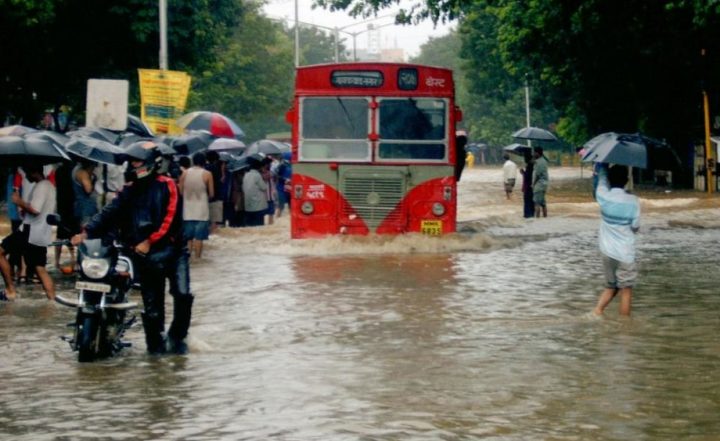Response measures have forced coastal communities in South Asia to choose between a super cyclonic storm or shelters with no physical distancing.
South Asia, one of the world’s poorest and populous regions of the world, is struggling with control measures as Covid cases continue to rise. This public health crisis is being compounded by a swathe of climate-related disasters.
The most pressing problems came with the anticipated cyclones that hit the Bay of Bengal pre- and post-monsoon, between October-November and April-May. In May, eastern India and Bangladesh saw Cyclone Amphan, one of the strongest cyclones to strike the region in recorded history.
High winds and heavy rain resulted in extensive damage to very vulnerable communities in both states, even though the storm weakened as it made landfall. The storm is estimated to have caused damages worth $13.2 billion (US dollars) in the Indian state of West Bengal alone.
Cyclones
Due to early preparations, large-scale evacuation efforts saw nearly 2.2 million people in Bangladesh and 4.3 million people in Indian states moved to safety.
George Stacey, an analyst working with Norvergence, an environmental advocacy NGO, said: “Response measures have faced further complications due to the onslaught of Covid-19 lockdown measures and also left coastal communities with having to choose to risk their lives in a super cyclonic storm or in congested shelters with limited room for physical distancing.”
Just weeks later, another severe cyclone, Nisarga, struck Maharashtra on India’s western coasts. The eye of the storm narrowly missed Mumbai, India’s most populous city of 20 million, which is already struggling with some of the highest numbers of coronavirus cases in the region. Nearby districts experienced more serious damages with six deaths, over a dozen injuries, and thousands being relocated.
Sunil, a farmer living in Maharashtra, said: “The police came to our village and asked us to evacuate and take shelter in a nearby school in the next two hours. When we came back home a day later, everything had been destroyed.”
The cyclone also came dangerously close to Karachi, Pakistan’s largest city that is home to 15 million, and resulted in storms and high winds hitting parts of the coastal city. Reports reveal that the storms resulted in power outages citywide and at least four dead, a dozen injured, and infrastructural damages in vulnerable neighborhoods.
Glaciers
Many communities in northern Pakistan have also been facing potential relocation as the risk of flash flooding from melting glaciers increases in the summers. Northern Pakistan is home to over 7000 glaciers, the highest number in a region besides the polar caps, and increasingly hot summers are melting glaciers and forming large glacial lakes that can burst and cause deadly floors in valleys nearby.
Pakistan had more than 3000 glacial lakes and at least 33 of them were considered hazardous, putting 7 million people at immediate risk, according to information shared by UN Development Programme-Pakistan (UNDP) in 2018.
A glacial lake outburst flood (GLOF) in May hit Humza, a small village, and destroyed produce and left several families displaced. On 20 June, Pakistan’s Federal Minister of Climate Change shared an early warning of potential GLOFs around three glacial lakes that would impact the nearby communities.
Syed M Abu Bakar, a Lahore-based award-winning journalist covering the climate crisis from Pakistan, said: “We may divert our attention and resources to deal with COVID-19 which is certainly a global health crisis but we must not forget that the natural disasters compounded by climate change await our response.”
Several other communities across South Asia are also at risk as local and national response capacities remain stretched thin during the Covid-19 crisis, and as the monsoon brings flooding, landslides, and other dangers to very vulnerable coastal communities and cities.
Locusts
Stacey said: “It is so important that the region comes together and works on solutions, disaster management, and preparedness for coming challenges together.
“Covid-19 showed that policies and implementations vary between states and provinces, which is getting in the way of effectiveness and efficiency. Climate-related hazards are likely to worsen in the coming years and the region needs to start putting its differences aside if it wants to be well-prepared for upcoming crises.”
The ongoing locust swarms across parts of South and Central Asia, a result of climate change, recently pushed India and Pakistan to work together to fight the crop-devouring insects. Even though tensions between the nuclear-armed neighbors continue, both countries have held ten border meetings in the past three years to discuss locust control.
Covid-19 is also posing additional challenges to containment efforts of what is considered the worst locust plague in nearly three decades as workers spraying pesticides on the insects deal with physical distancing limitations.
“Both Covid-19 and climate-related disasters are impacting and will continue to impact the region and also worsen the economies, which will, in turn, leave more people vulnerable,” says Stacey. “Better cooperation is the only way forward.”
This Author
Rabiya Jaffery is a freelance journalist and multimedia producer covering stories from the Middle East and South Asia. She reports on climate, culture, and conflicts. She tweets at @rabiyasdfghjkl.






